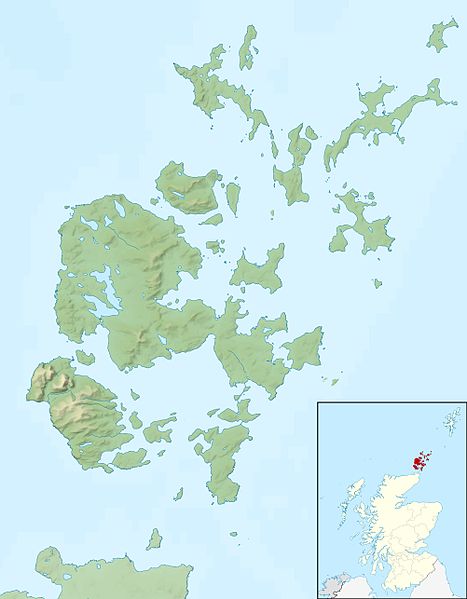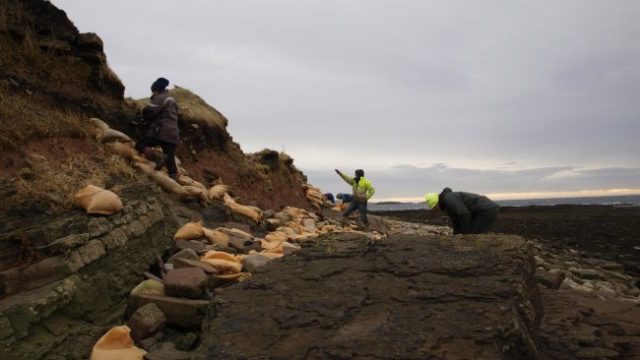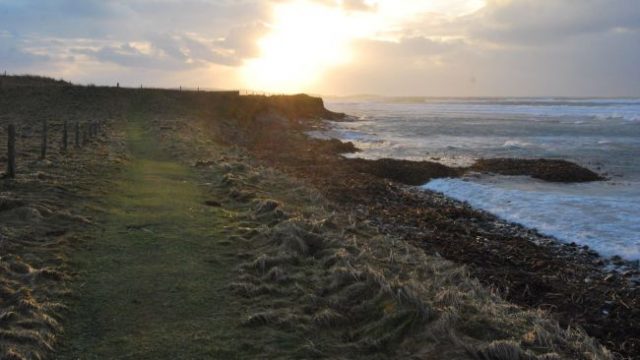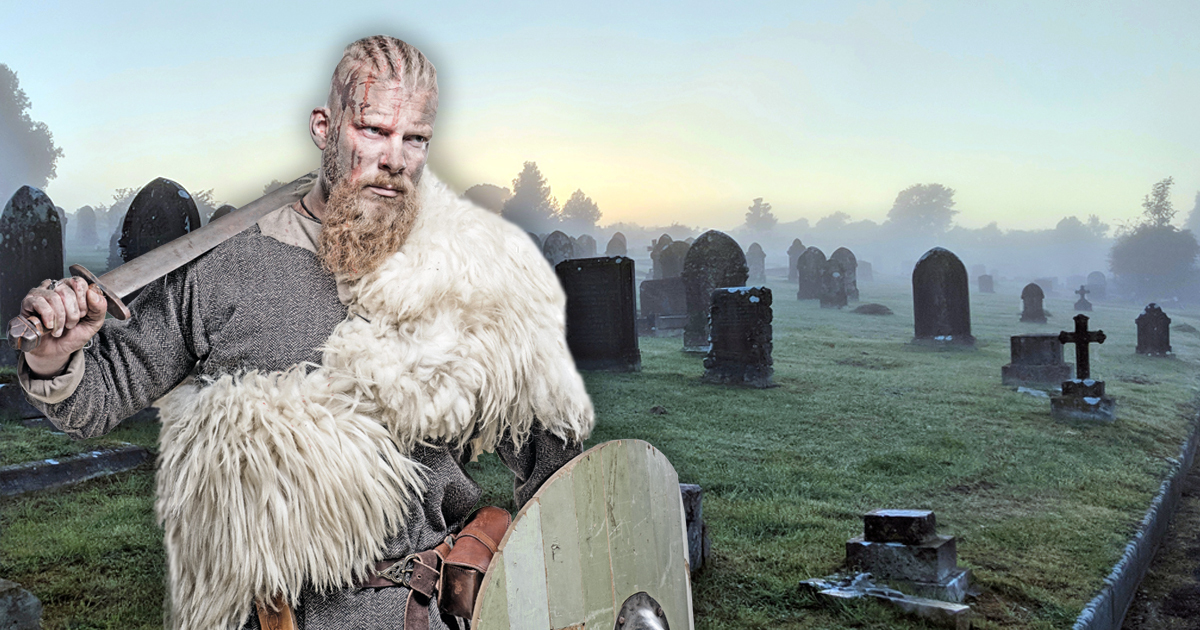An ancient Viking cemetery on a Scottish island is under threat from the elements. Archaeologists usually excavate the bodies, but weather is now playing a dramatic role in exposing the entire cemetery on Newark Bay in the Orkney Islands.
Recent storms have literally been making waves. Buoyed by south-easterly winds, these have been taking their toll on a soft sandstone cliff where the graveyard is found. As a result bones are starting to stick out after being exposed and, like something out of a Ray Harryhausen movie, some are falling down onto the beach.

Looking after the site – which dates back to the mid-6th century – is a team effort, involving both experts and residents. ORCA (Orkney Research Centre for Archaeology) are working alongside the University of the Highlands and Islands Archaeology Institute. Volunteers also pitch in.

(Image: © ORCA Archaeology)
A combination of clay, to cover any bones sticking out, and sandbags has been deployed thus far. Archaeology Orkney released a statement on their website, saying “We know that the sandbags are not the answer to protecting the site in the long term, but they provide some protection, and as soon as the weather makes it safe to replace and secure them again, we’ll put out a shout for help.” Newark is partly composed of soft boulder clay, meaning the island is prone to landslides. Authorities are advising caution at all times.

The size of the Viking cemetery has yet to be determined, though hundreds are thought to have been laid to rest. ORCA’s Peter Higgins commented to STV that “although its physical extent is not known, it is thought to be extensive.” The location was in use for around a thousand years (550 AD – 1450 AD) and has many secrets yet to reveal.
So who is buried in the Viking cemetery? The tribal Picts were native to the area but received guests – unwanted or otherwise – in the form of Vikings. They’re believed to have landed there in the late 8th century and evidence of them exists up until the 15th.

“The islands became a Norwegian earldom late in the ninth century,” writes Live Science, “and they remain the region of the British Isles that is most influenced by Norse culture.”
During the 1960s and 70s British archaeologist Don Brothwell removed approx 250 skeletons, which ended up at London’s Natural History Museum and Kirkwall’s Orkney Museum. The precious finds are being genetically tested to determine what relationship the 2 groups had with each other.
“No records left by ordinary Picts who were colonized by the Vikings exist,” writes Smithsonian Magazine, “but Scandinavian sources suggest that Orkney may have been deserted by the time the invaders arrived—or, alternatively, that it was violently purged of its inhabitants.” It’s also feasible the Picts and Vikings lived in relative harmony.
Historic Environment Scotland have supplied funds for a 3 year program, so questions may finally be answered. Archaeology Orkney explains that “Years 2 and 3 of the project will be examining in depth the human remains, completing DNA analysis and other work to determine as much as we can about the many folk buried there.”
It isn’t just bones that are found on Newark. The Orkney Islands in general has a rich archaeological backstory. Among the treasures there are 13 burial mounds that comprise the Ring of Brodgar (3,000 BC). 2016 saw a Pictish stone revealed by the elements, and going forward in time a 17th century manor house stood proudly on Newark before the weather did its worst.
Related Article: Two Viking Ships Unearthed Reveal Extremely Rare Viking Burial Practices
Like many, Higgins is concerned about the tight time frame organizations have to complete the work. Quoted by STV, he says the coastline is “under constant threat from storm surges and huge waves blowing in from the North Sea”, adding that “with the continual procession of bad weather we have experienced in the past few months, the site is under constant threat of further destruction – revealing more human remains as each storm passes.”
Things could all be over for the Picts and Vikings within months. Conditions have reportedly calmed, with snow taking the place of waves. However, as history has shown, powerful forces have a habit of changing the game whether players are ready or not…
